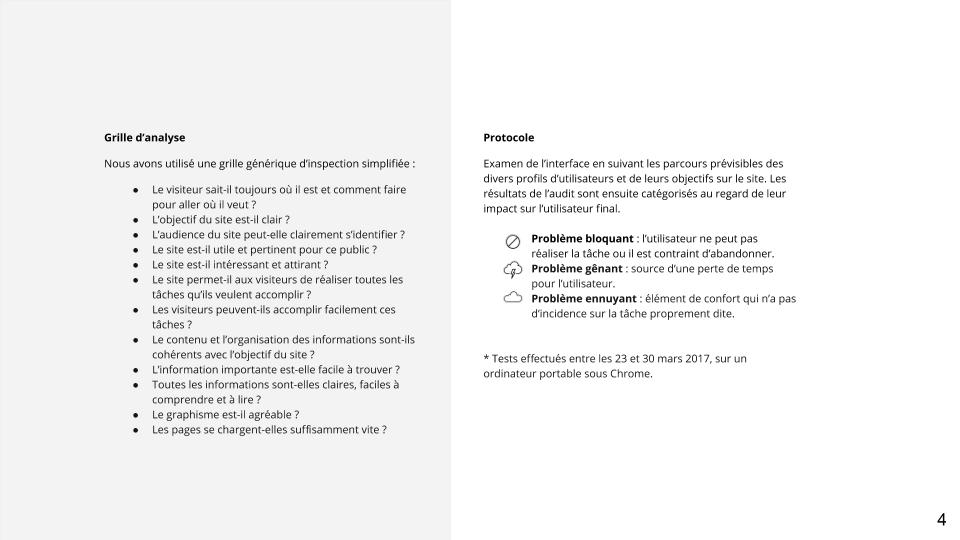Quantitative Research
Analytics
Collect and synthetise data on our users (reporters and PR pros).
Constraints
It appeared only a few data were collected on our users. And if so, only a few were reliable. Furthermore, with a launch in the US less than a year before, the volume of data collected on our US users was not representative enough.
Findings
It allowed us to consolidate the personas segmentation. While it confirmed what the team knew about PR pros users, they were very interested to have hard evidence on our reporters users.

Surveys
Goal
Mainly to collect data on reporters users (profiles, uses, needs, expectations, fears, improvement ideas) as well as on reporters in general. A secondary goal was to implicate our users in the improvement of their experience on the platform.
Protocol
- Tools: Excel spreadsheet, Google Forms, Typeform, Infogram
- Communication: Via the platform through an Intercom message for active users, and per email for non active and non users
- Duration: 2 months with 2 reminders for users, 1 month with 1 reminder for non users
- Participants: Active and non active users, Babble’s PR email database of reporters non users
Constraints
With a limited budget, I chose convenient samples of users & reporters. With more ressources, I would have asked a specialized institute for a more representative sample of reporters non users. Since Babbler had launched its service in the US less than a year before, I also had the difficulties to gather compelling data on US users (only 47 respondents).
Findings
It allowed us to consolidate the personas segmentation. While it confirmed what the team knew about PR pros users, they were very interested to have hard evidence on our reporters users.

Qualitative Research
Heuristic Evaluation
Goal
Identify usability issues to be addressed as part of the iterative design process.
Constraints
With limited ressources, I managed the usability audit myself. I used the 10 usability heuristics of Nielsen and Molich. It ended up being a quick and dirty inspection method.
Findings
I established a report listing all the problems and suggesting potential solutions. It was a fast way to help identify quick wins and help the product manager prioritize the backlog.

Interviews
Goal
Get insight into how users feel, think, and what they think about the product.
Protocol
- Method: Semi-structured interviews
- Tools: Excel spreadsheet, tape recorder, Evernote, Trello
- Location: Babbler’s offices or over the phone
- Participants: Active users, Babbler’s beta testers
Constraints
With more ressources, I would have asked a specialized institute for a more representative sample of users, and the use of a controlled environment like a lab to avoid the bias of conducting interviews at the office. I would have implemented the interviews with observation-based research to attain a more accurate and thorough sense of what our users really do, and a higher feeling of confidence with the information collected.
Findings
It helped us get into the pattern of thought and complete the personas and journey maps with real testimonials. After each interview, we would also communicate to the entire team on our Trello board important learnings or feedbacks relevant to our design needs.

Netnography
Goal
Get insights into what users think about Babbler.
Protocol
- Method: Non-participatory observation
- Communities identification and selection: Online search engines allowed us to identify online communities talking about the brand (Facebook, Twitter, Forums)
Constraints
With more resources, we would have used automated software. There was limited data to be gathered since the brand was quite new. We had to filter real data from communication and marketing material.
Findings
It offered us new insights, providing embedded understanding of users frustrations, naturalistic views of brand meaning. By identifying lead users and online communities, this research brought some opportunities for our communication department regarding the development and management of online communication environments.
